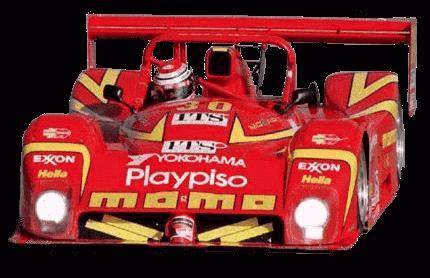Sportscar Racing In The US

Racing in the US is a little of a law unto itself. In the 60s and 70s, the Canadian-American (Can-Am) series dominated, but in more recent times IMSA (now the Professional Sportscar organisation) have run series roughly along the lines of the series running in the rest of the world.
In the 50s, 60s and 70s, US Sportscar racing was pretty much in line with the rest of the world. The super succesful GT40s were built by Ford with the aim of winning at Le Mans, not at home, and cars such as the and Shelby Mustangs were the main kind of GT car race then.
Probably the most succesful US sportscar racing series ever was the Canadian-American Challenge (usually known as Can Am). This produced huge open top single seater sports prototypes with enormous engines. Teams such as McLaren (when Bruce was still in charge), Penske, Lola and Porsche all achieved considerable in the series and top drivers were often seen driving the cars. The series ran throughout the 70s and the cars are still frequently seen in historic series, where there enormous power outputs enable them to dominate, although, from my observations, they lack a lot in the finer details of cornering.
In the early 80s, the main IMSA series was roughly the same as the Group 5 World Endurance Championship, indeed Daytona was an integral part of the WEC for many years. Cars from the IMSA series have usually found a welcome at the Le Mans 24 hours as well, even when the FIA and IMSA regulations were at odds.
In the 90s, IMSA GTP and Group C rules were, again, close, allowing Porsche and Jaguar to run cars of nearly identical spec in both series. Nissan and Toyota both rose to sportscar note in the IMSA series, before trying their hand in the World Sportscar Championship.
Currently, the US sportscar racing scene is dominated by the open top, sports prototypes, known as World Sportscars (or WSC). Cars like the Ferrari (shown above from a photograph from the Professional Sportscar website), the Riley and Scott and Spice, compete with each other. Racing is generally close and a number of manufacturers (including Ferrari and Chevrolet) provide engines, which equivalence rules allow to compete together on a more or less even basis.
The double Le Mans winning TWR-Joest Porsche was designed for the WSC series, but last minute restrictions imposed on turbo engines led Porsche to withdraw in disgust. The car was then consigned to a museum until Joest persuaded the Porsche factory to lend it to him, with such success.
The FIA has recently introduced a tentative race series for such cars, but it has met with muted interest outside the US.
In addition, there is a class for GTs in the Professional Sportscar series. These cars are, again, close to the current FIA GT spec, but it seems unlikely that the top flight GT1 cars will be accepted in the US, although two FIA GT races, at Laguna Seca and Sebring, are taking place in 1997 and the hope is that FIA, US and Le Mans GT rules can be harmonised for 1998, making it a truly World Championship category.
Back To The Sportscar Racing Page
